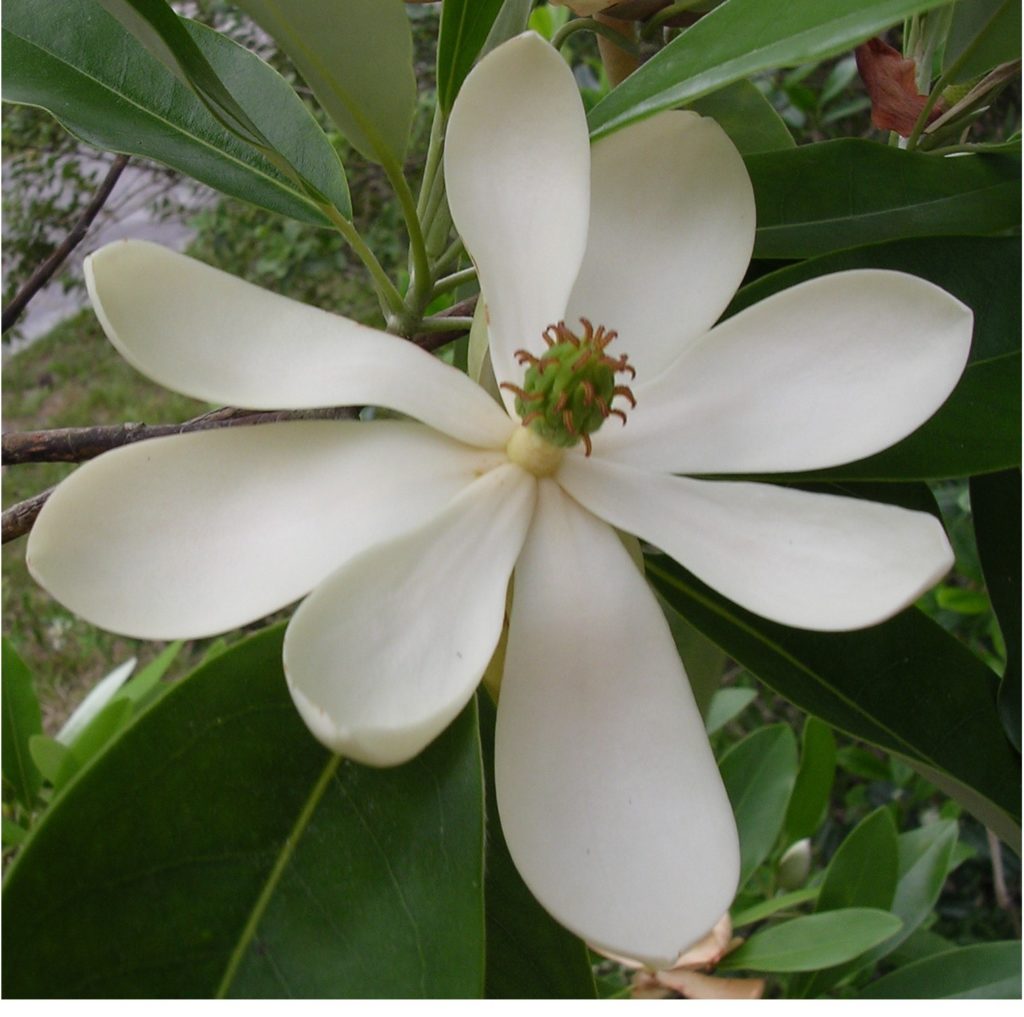
Sweet Bay Magnolia
Magnolia virginiana
Sweetbay Magnolia is a beautiful, smooth, white barked tree with fragrant six inch white flowers followed by red fleshy seeds dangling from a cone. It is found in all of the eastern U.S. and along the gulf coast to Texas.
It grows naturally along the edge of marshes in tree islands and other acidic, moist, raised ground high in organic matter. Sweet Bay will die if flooded for more than a few days.
It does well on the edge of ponds, or lakes where leaves and other organic matter accumulate. With our southeast winds, this tends to be the northwest corner.
Sweet Bay will form a colony by suckering and makes a great screen while young, yet it will eventually reach 40 feet tall with a nice clean trunk.
Under plant with ferns like the Giant Leather, Marsh, Hottentot or Swamp Fern. Try a rim of shrubs including Wild Coffee, Marlberry, Swamp Dogwood, Virginia Willow, Wax Myrtle and Saw Palmetto. Cypress, Dahoon Holly, Swamp Red Bay, Pond Apple, Slash Pine and Red Maple look nice nearby.
Sweetbay Magnolia is the larval food for the eastern tiger swallowtail and will attract this butterfly to unexpected areas like eastern Palm Beach County. The seed source should be local. Add fertilizer with iron if the leaves turn yellow.
Squirrels, turkey, quail, and other birds and wildlife eat the red seed cover. It is not tasty or poisonous.
This is one of our few flowering trees that makes a beautiful mass and flowers at the same time as Loblolly Bay, which has a three inch white flower with a yellow center. Both need the same kind of soil.
If you have a low, mucky area of the yard, don’t fill it with sand and sod over it, plant a mass of Sweet Bay Magnolia and other wetland plants. Place a bench or chair along the edge and enjoy viewing the wildlife attracted there.